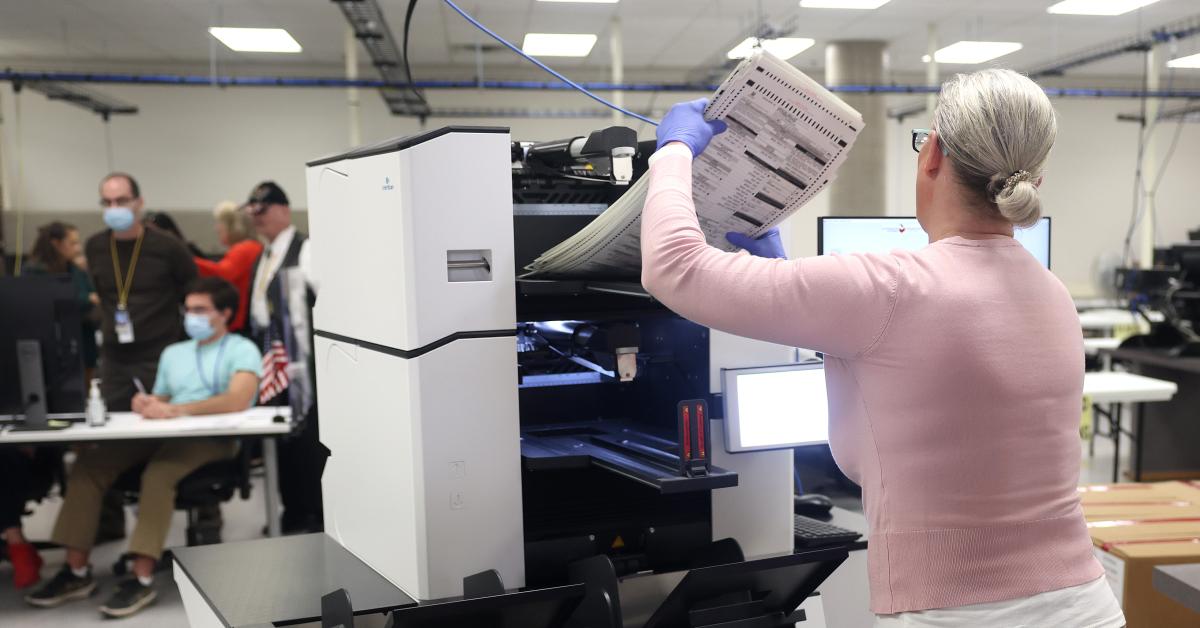Maricopa County Official Says Printer Settings Changed on Election Day, Linked to Tabulators Rejecting Ballots
A top Maricopa County elections official admitted Thursday in the Kari Lake election challenge trial that incorrect Election Day changes to ballot-on-demand printer settings were a factor in ballots being rejected by tabulators.
Lake, the 2022 Arizona GOP gubernatorial nominee, is suing her Democratic opponent, Governor-elect and Secretary of State Katie Hobbs; Maricopa County Recorder Stephen Richer; the county Board of Supervisors; and county Director of Elections Scott Jarrett.
Lake’s case alleges the “number of illegal votes cast in Arizona’s general election … far exceeds the 17,117 vote margin” between her and Hobbs.
Jarrett, who testified as a witness for the plaintiff on Wednesday and as a witness for the defendants on Thursday, admitted under direct examination by defense counsel that the county is conducting a root cause analysis of the Election Day issues. During this post-election analysis, the county found last month that one of the problems with ballot-on-demand printers was a “fit-to-paper” or “shrink-to-fit” setting adjusted on Election Day, Jarrett said.
Maricopa County has admitted that 70 of its 223 vote centers experienced ballot printer issues on Election Day, while Lake alleges in her lawsuit that about 132 of them did.
Under cross-examination by Lake’s counsel, Jarrett explained that the setting was changed by a temporary technician at one of the vote centers who was trying to find a solution to the printer issues. The setting was adjusted on the tech’s own initiative, not at the direction of the Maricopa County Elections Department, Jarrett testified.
As test prints were done for vote centers prior to Election Day, no shrink-to-fit printer setting issues were identified, Jarrett said. He he didn’t know if all technicians were asked about the shrink-to-fit issue.
Jarrett testified that the printer settings were changed at only three vote centers, affecting nearly 1,300 ballots, and that no other Door 3 ballots in the county that weren’t read by tabulators had that issue. He noted that ballots from one of those vote centers had been inspected on Tuesday by Lake’s inspector, who was her cybersecurity expert during the trial, Clay Parikh.
Parikh, however, testified on Wednesday that 14 out of 15 Election Day ballots he viewed on Tuesday from six vote centers were printed incorrectly.
During cross-examination by Maricopa County Attorney Tom Liddy on Wednesday, Parikh was asked if a shrink-to-fit setting could have caused the issue of 19-inch ballots being printed on 20-inch paper. Parikh said it was possible but that it would’ve violated the configuration settings for the voting systems and the tabulators.
On redirect by legal counsel for the defendants on Thursday, Jarrett said that the shrink-to-fit printer setting issue had occurred during three prior elections: the August 2020 primary election, November 2020 general election, and the August 2022 primary election.
Jarrett didn’t mention the shrink-to-fit setting when asked about printer settings on Wednesday, but said on Thursday under cross-examination by Lake’s legal counsel that it was because he wasn’t specifically asked about it.
During direct examination by Lake attorney Kurt Olsen on Wednesday, Jarrett testified that he hadn’t heard reports of 19-inch ballots being printed on 20-inch paper during the general election and that there was no 19-inch ballot design for the November election.
On Thursday, Jarrett revealed that another printer issue found by Maricopa County’s root cause analysis was that the heat settings weren’t high enough to correctly print the marks the tabulators needed to scan. He testified that any ballots that couldn’t be read by machines at vote centers but were put into Door 3 were later duplicated on new ballots and tabulated at the Maricopa County Tabulation and Election Center (MCTEC).
The judge in the trial is expected to reach a decision in the case before January.
" Conservative News Daily does not always share or support the views and opinions expressed here; they are just those of the writer."






Now loading...